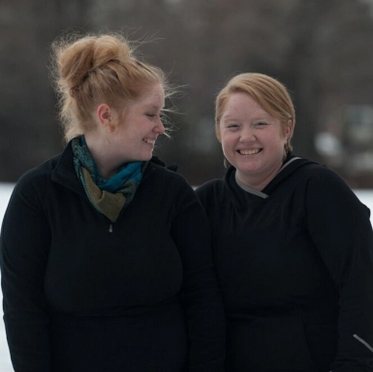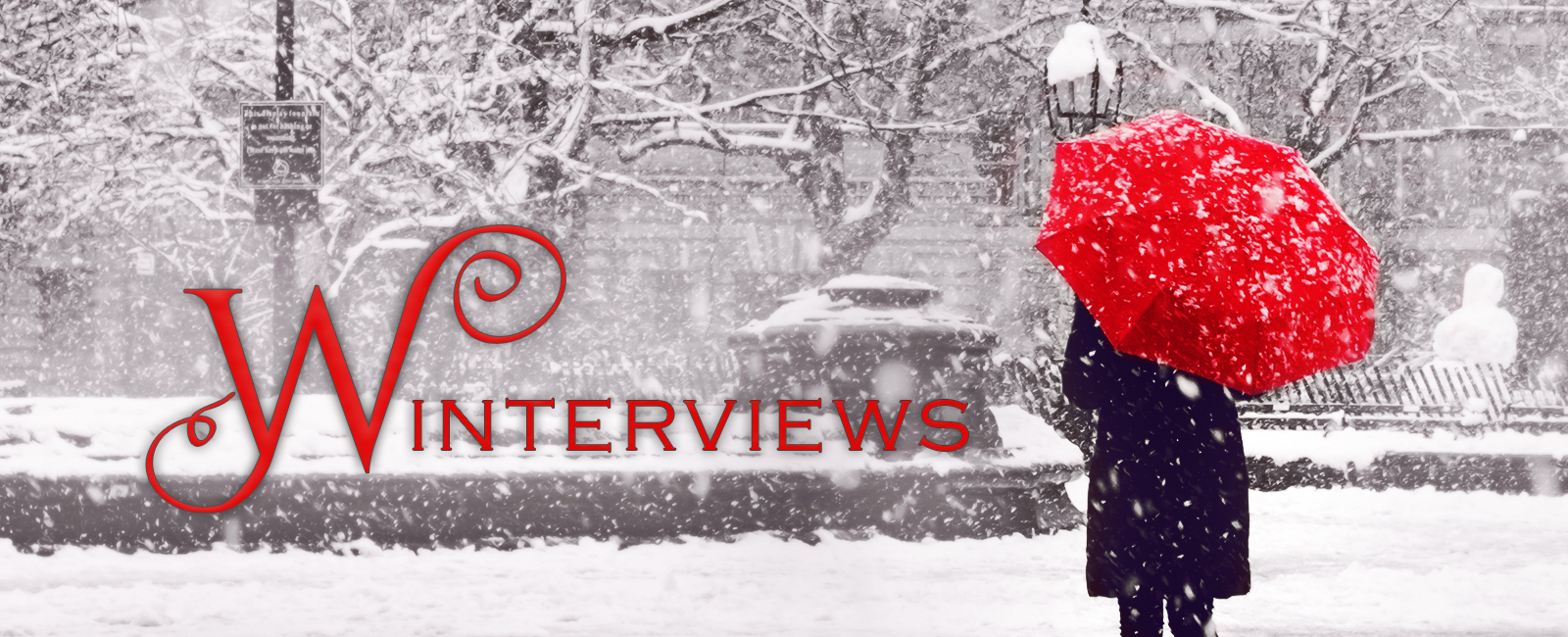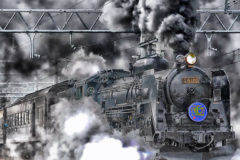Join us on the hashtag #13Winterviews, or check out this season’s articles:
Welcome to the Season | Winterviews Partners | 2019 Blog Hop | Book Pairings | Winterviews & Solstice Eve
It’s our 13th and final week of Winterviews, and today we’re traveling to the Venice of the Far East as we say hello to Cassandra Farrin.
Tell us a little bit about yourself.
I am one of those wildly improbable genetic rarities: a red-head and identical twin! My sister and I have always been extremely close even when we lived all over the world in places like Japan, Mexico, and England. After college and our travels, we adopted children together—we have a daughter who is 11 and a son who is 10, and their birth family is originally from the Marshall Islands, so we’re also a multiethnic family, which really has come to define us in so many ways.
Professionally, I suppose I should also mention I’m the Managing Editor of Amberjack Publishing, an indie trade publisher based in Idaho. That means I coordinate the overall schedule for the press—how each manuscript becomes a book over the course of a year.
What types of books do you write, and why?
I write literary-leaning speculative fiction and literary fiction with speculative elements. Which means I love the puzzle of HOW a story is told just as much as WHAT the story is, and I love taking risks with my writing projects.
What were your early influences, and how does this manifest in your work today?
Louise Erdrich showed me how FUN books can be. She never writes in a straight line and rarely seems to consciously dictate when to hit certain plot points or whatever—she’ll happily take you off on tangents in stories that seem unrelated to the events that kicked off the book, yet it’s so engaging that you just go along with it. Her book THE LAST REPORT ON THE MIRACLES AT LITTLE NO HORSE is, to me, one of the best novels ever written.
Are there aspects of the craft that excite you more than others?
I love it when readers say to me, “I had no idea what was happening but I just couldn’t stop reading because I liked listening to the characters talk.” There’s such an authenticity to a reader and a character connecting like that, as if they’re sitting over drinks and bull-shitting about something. Banana Yoshimoto is brilliant at achieving that effect in her novels, for example.
I also go wild over setting artificial parameters on myself as a creative challenge: I’d say to myself, “I don’t think I’m funny, so I’m going to write a funny book just to prove to myself I can.” My first attempt at that was a good story but not necessarily laugh out loud funny, so instead of giving up I just hammered out a second story to keep at it. I love that sort of thing.
What books or websites are your go-to places while editing?
I am NOT a “save the cat” writer. I hate books about plot and pacing. They just kill all my creativity, even though I know other people swear by them. I remember reading all the Writer’s Digest-style “how to” guides one right after the other through high school so that by the time I graduated, I could predict what they’d all say. The result was that writing novels began to feel tedious. Like a lot of writers, I began writing as a very small child and had to shelve all of it, but those were my early training grounds. So, I’m not saying those cookie-cutter “how to write” books weren’t useful, just that I internalized the lessons that spoke to my experience and then couldn’t stand to hear them repeated ad nauseum anymore.
Now, I prefer to read books like SEVERAL SHORT SENTENCES ABOUT WRITING by Verlyn Klinkenborg and THE ART OF SLOW WRITING by Louise DeSalvo. They have this intuitive understanding of how we write that can draw me out when my writing begins to feel stagnant. I come to appreciate the years of my life when I couldn’t write at all because I was living and experiencing the world and growing into someone who could write meaningful work. Sometimes you have to allow yourself that space to breathe.
Tell us about your writing space.
I have one of those heavy oak old-fashioned secretary desks, very narrow, almost like a shelf until you fold down the desktop to set your notebook or your computer on top. Inside it I keep tiny figurines I collected from shrines across Japan and through my travels in Europe, a wood-carved fisherman gifted to me by a friend’s family as a token to remember living with them, and porcelain foxes for luck. I also surround myself with scented oils, favorite books, and a collection of scarves from my travels, because they make me feel more grounded in myself. I don’t need all of this stuff to write well (I can write anywhere), but it’s my chosen space.
Somewhat infamously, I hand-draft all my novels, so I have a shelf full of journals containing early material from the three manuscripts I’ve completed. I write out of order, too. I focus on the sentences I want—the images and gestures and moments of the book—and figure out what order to put them in later. It’s very freeing!
Tell us about your latest book release.
I’m cycling through line edits and revisions of three different manuscripts, but the one that I’m most proud of at the moment is HAI, a Cinderella retelling set in 1900 Tokyo on Japan’s very first steam railway. I did an enormous amount of research for this novel—so much that my friends have joked that they learned all about the history of Japanese railways and also Japanese fashion from reading my book. Tokyo used to be known as a city of rivers and canals, “the Venice of the East” but of course today everybody knows it for the trains, so I loved capturing that moment when the city transformed from one to the other.
I’m very happy to share that HAI was recently short listed for the Bath Children’s Novel Award, an international prize for unpublished manuscript written for children or young adults. You can read all about the award here. The prize for short-listees was to receive feedback from the judges, including the teen judges, which was an enormous gift for me. I loved seeing what my intended readers thought, and I’m currently using their feedback to make the novel even stronger. The biggest validation was that teen boys liked my book!

You can follow Cassandra on Twitter and Instagram, and learn more about her on her website, cassandrafarrin.com.




